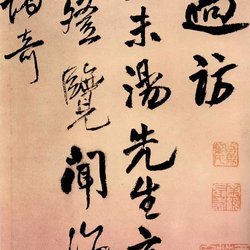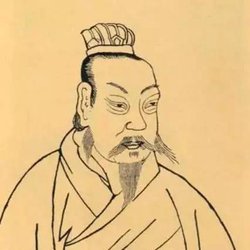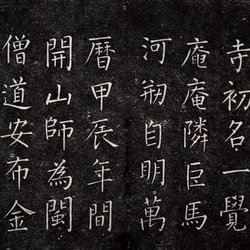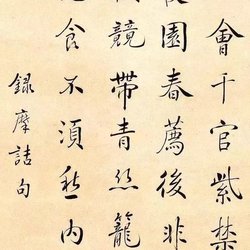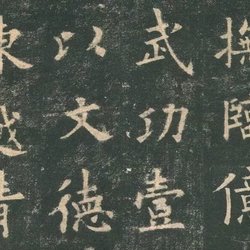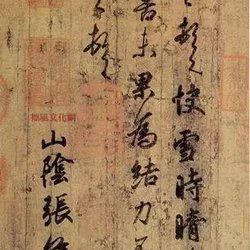"The Thousand-Character Essay" by Zhiyong
Written and practical, not rigid or pretentious
The words are not heavy, and the words are integrated into one, so you can pick them up at your fingertips.
Draw inferences from one example and be flexible to facilitate transfer to other disciplines
Precious ink, clear strokes, excellent example
High and ancient style, suitable for both refined and popular tastes
long horizontal
Monk Zhiyong (birth and death unknown) was a native of the Southern Dynasties. His real name was Wang Faji and his courtesy name was Zhiyong. He was a native of Shanyin in Kuaiji (now Shaoxing, Zhejiang). He was the seventh grandson of the calligrapher Wang Xizhi and the fifth son of Wang Hui, who was named "Yong Zen Master". Zhiyong is good at calligraphy, and he has family rules for writing. The "Lanting Preface" written by Wang Xizhi as a family heirloom was brought to Yunmen Temple for preservation. Yunmen Temple (formerly known as Yongxin Temple) has a book pavilion. Zen Master Zhiyong lived in the pavilion and wrote books for 20 years, leaving behind legends such as "Tuibi Tomb" and "Iron Threshold". Zhiyong had a profound influence on later generations of calligraphy. He passed down the "Eight Methods of Forever Characters" and set an example for future generations of regular script. More than 800 copies of "The Thousand-Character Essay on Shinso" were published and widely distributed, with influence as far away as Japan. Even now, it is still a classic textbook for calligraphy learning.
Long horizontal strokes slide from thick to thin

Long horizontal strokes slide from thin to thick

short horizontal
The short horizontal stroke is forward and the strokes are flowing


long vertical
The long vertical strokes are fluid and the long vertical strokes are round, strong and elastic.


short vertical
The short vertical stroke is full and plump, and the short vertical stroke has rich and varied angles.


suppress
The slant strokes are varied and the strokes are round and full.

Straight, slightly straight, then straight

The orchid leaves are long and elegant

Zhiyong, a monk between the Chen and Sui Dynasties, whose name was Faji and whose surname was Wang, was from Kuaiji. He was good at calligraphy, especially cursive calligraphy. He is the seventh grandson of Wang Xizhi and the successor of Wang Xizhi's fifth son Wang Huizhi. A monk from Yongxin Temple in Shanyin (now Shaoxing, Zhejiang), he is known as "Yong Zen Master". He often lives in the Book Pavilion of Yongxin Temple and studies calligraphy near the pond. Studying behind closed doors for thirty years. He first learned calligraphy from Xiao Ziyun, and later followed his ancestor Wang Xizhi as his sect, studying calligraphy in the book pavilion of Yongxin Temple for 30 years. Zhi Yongmiao passed down the family method and was very energetic. Few calligraphers in the Sui and Tang Dynasties came to study. A hundred years old is the end. Zhiguo, Biancai, and Yu Shinan all have excellent calligraphy skills in Zhiyong.
Dong Qichang of the Ming Dynasty said in his "Essays on Painting a Zen Room" that he studied Zhong Yao's "Declaration Table", "Every time he uses a pen, he must twist and turn, turn back and forth, and finish calmly. It is said that when he writes, he wants to penetrate the back of the paper." "The Thousand Character Essay" written by him
He Shaoji of the Qing Dynasty said: "The pen comes from the sky and lives from the sky. Although the house has leaks, it is not enough to describe it." We carefully read his ink "Thousand Character Essay", and we can see that he used the pen to hide the head and protect the tail, with twists and turns, implicit and rhythmic interest. What Dong and He said is accurate, specific and appropriate.
Shorthand
short skim contrarian friction 
point
Short, thick and powerful

The long point is slightly curved

The pen is broken and the mind is still looking forward to the gesture

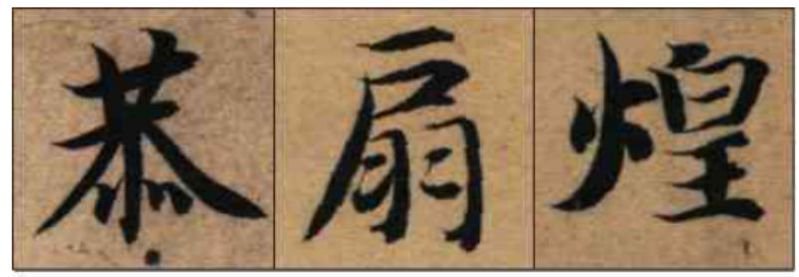
Straight hook
The straight hook comes out diagonally (a bit flatter than Tang Kai)

The two-stage straight hook is hundreds of years earlier than Mi Fu in the Song Dynasty.

The last stroke of the diagonal hook comes out with the trend

vertical hook
The vertical curved hook moves upward and comes out

Right oblique hook
There is a gap after the right oblique hook hooks out, which looks like Yanliu

The right oblique hook sometimes does not hook out

Horizontal hook
The horizontally curved hook sometimes has a gap and sometimes turns around after being hooked out.

lying hook
The lying hook sometimes turns around after being hooked out

Calligraphy practice questions are published by 15 Calligraphy Practice Network. Please indicate when reprinting:https://www.seowhy15.com/a/463.html

